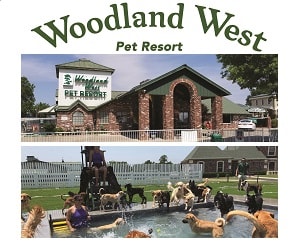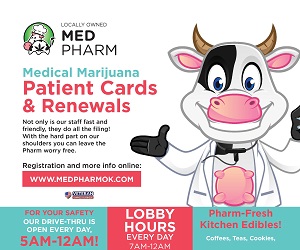Acclimating Your Dog to the World (and Why It’s Important)
Written By Travis Brorsen
Pet Expert, Trainer and TV Host
Nothing is more frustrating or embarrassing than taking your dog somewhere only to have him act like he’s never been beyond your front door. People stare, point, judge, and some might go as far as making a comment: “Oh, is he a puppy? This is probably the first time he’s been outside, right?” Or even worse, they start giving you dog training tips they saw on YouTube.
Having a well-balanced, acclimated and socialized dog takes work. More importantly, it takes patience. Taking your pup into public places can be stressful. I want to share with you what acclimating your dog really means, the benefits of doing it and how to get the well-mannered pup you’ve always dreamed of.
What Does ‘Acclimating’ Your Dog Mean Exactly?
The word acclimate is defined in Webster’s Dictionary as adapting to a new temperature, altitude, environment or situation. Therefore, “to acclimate your dog” means to introduce him early on to new places, things, sights and sounds so he doesn’t freak out when he comes into contact with them for the first time. Have you heard the phrase, “This isn’t my first rodeo”? Well, we don’t want your dog to become the clown!
Think of your experiences at different places you’ve visited personally. Let’s take the dentist for example. My memory of the dentist was a scary, white waiting room that smelled weird. There were lots of magazines for my mom to read and a door the people kept disappearing behind.
Once I finally had the courage to walk through that door, I was placed in a bizarre chair that tilted back only to be followed by drilling in my mouth—not fun.
My son, on the other hand, went to the dentist for the first time last week. He described it like Disneyland. There were giant, colorful pictures on the wall, an abundance of toys to play with and super fun music! His first visit was all about fun, high fives and tickling. He woke up the next day and asked to go back. What was the big difference between my experience and his? One was positive, and the other was not. It’s that simple.
Your dog could be going to the vet or the dog park, but whatever energy you are giving off, he will vibe with it. The memories dogs have of their experiences will stick with them. I encourage my clients to stop in at their vet with their dogs just to give them a treat in the parking lot. Walk in the lobby, ask your dog to sit, praise him and leave. Dogs associate places with the experience they have while they are in that particular space. Again, it’s that simple.
Puppy Acclimation
With puppies, I encourage pet parents to take them to as many places as possible within reason. Always listen to your vet, but be realistic as well.
- At Home
Make sure you have everything you need before your dog arrives, including a crate, food, bowls and chew toys. Next, set household boundaries, such as where the dog is allowed. Will you let him on the furniture? If so, understand what he does as a puppy, he will also expect to do when he gets bigger. Will excited play be allowed in the house? Or do you want to keep roughhousing outdoors only? If you have a big dog, you must understand that if you play rough in the house—which I don’t encourage anywhere—your big dog will associate that type of interaction with that space when he weighs 80 pounds. Finally, use the crate for multiple hours during the day, not just at night
- Car Rides
To acclimate your pup to the car, start with just getting in and out of the car without going anywhere while praising your dog with love, affection, treats or even a favorite toy. When you feel he is ready, start the car and head down the driveway. Turn around and head back. Once you arrive home, get out of the car and repeat with praise and affection.
If you haven’t taken long trips with your pets before, avoid giving food or water two hours before you leave and offer multiple potty breaks. If you are departing in the morning, simply wait until you reach your destination to give them breakfast. They will be fine, I promise, as long as you aren’t traveling more than five to six hours.
- Public Places
A great place to visit with your new pup is a pet-friendly home and garden store. Don’t go there to shop; go there to acclimate your dog to the sights, sounds, smells and people. Take yummy treats, and every time your dog looks at something or smells something new, give him a treat. This will help him associate it with a positive experience.
If you don’t want to leave your house, at least spend some time on the front porch. As cars, trash trucks and even neighbors go by, offer a yummy treat to your dog. When your dog experiences the new sights and sounds, you can imprint a positive experience with praise, treats and affection.
Adult Dog Acclimation
The process for an adult dog isn’t all that different from the process of acclimating a puppy, but it might take longer. The best advice I can give you is to make sure that whatever you are using as a positive reinforcement reward is more desirable than what you are competing with in the environment. Understand that when you are giving your dog a treat, love, affection or any type of reward, you are encouraging whatever the dog is doing at that moment. For example, if neighbors walk by and your dog barks, then you follow it up with a treat, you are now encouraging the act of barking.
What If I Don’t Acclimate My Dog?
Once your dog gets older than 6 months, many experiences, or lack thereof, have already imprinted themselves. I work with many rescue dogs and families with pets that haven’t had many experiences. In some cases, they’ve never left the house. When dogs aren’t acclimated to new things and socialized with people and other animals, it can create serious problems. Some include separation anxiety, fear, aggression, reactivity and phobias. If your dog has serious issues like these, it’s important to seek the help of a professional to curb these unwanted behaviors before they get worse.
If you can hold your dog’s attention around new smells, sounds and environments with food, praise or toys, then these issues can be reversed with positive reinforcement. If your dog will not pay attention to you, it will be hard to counter-condition the behavior without help from a professional.
Is It Ever Too Late?
In most cases, it’s not too late. But in serious situations, when a dog has become aggressive and injured people or other dogs, there may not be adequate resources available. For dogs that aren’t aggressive, I always have hope. The older they are, the more challenging it can be, but I believe with the right approach, patience and a will to succeed, dogs will always surprise us.

